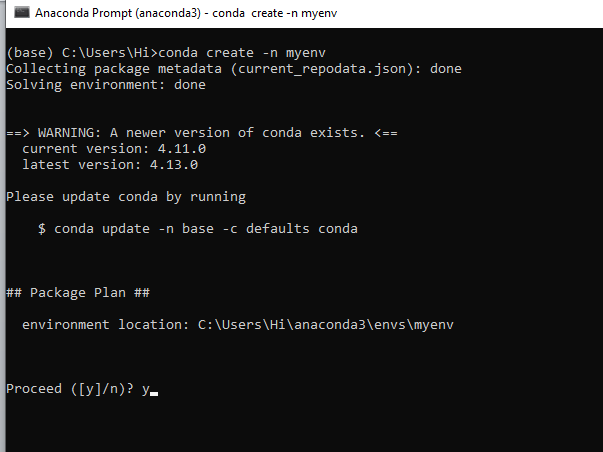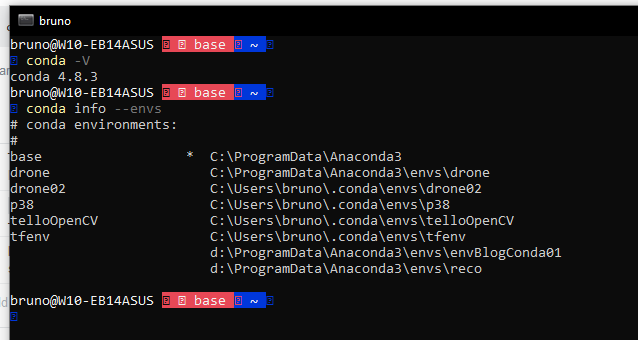
- #Anaconda create environment from requirements.txt how to#
- #Anaconda create environment from requirements.txt software#
- #Anaconda create environment from requirements.txt code#
- #Anaconda create environment from requirements.txt windows#
Note that at the time of this writing doing conda env create -file environment.yml to create the yml env results in an error: $ conda env create -file environment. Prefix: /home/miranda9/miniconda3/envs/myenv Optional: streamlit run streamlitapp.py successfully runs the app locally. Alternatively, you can specify a conda environment. google-auth-oauthlib=0.4.4=pyhd3eb1b0_0 Create new environment using conda create -name streamlit-test python3.7. You may also specify your pip dependencies either via a Python list or a local requirements.txt file. pandas Use these commands to create and activate the conda environment based on the specifications in the Yaml file: conda env create -file environment. conda-package-handling=1.7.3=p圓8h27cfd23_1 Alternatively you can create an environment.yml file instead of requirements.txt: name: p圓7 channels: - conda-forge dependencies: - python3.7 - numpy1.9. No need to run pip freeze > requirements4pip.txt separately for me or include it as a - pip: To store all of the packages and dependencies installed in our environment, we can run the following command.If you want to do it automatically it seems that if you do: conda env export > environment.ymlĪlready has the pip things you need.
#Anaconda create environment from requirements.txt how to#
Is that possible to use conda to activate and manage my virtual environment Since I haven't used a virtual environment before, I don't know how to create a new virtual environment without the provided files. conda install requirements.txt example create requirements.txt python create requirement.txt file django how to create a requirements.txt file in python conda create environment based on requirements.txt auto create requirements.txt auto create requirements.txt how to generate requirements. Note: Before creating the requirements.txt file, we need to ensure we have activated our Conda environment. However, I do most of my coding work using Anaconda. Conda: conda environments and environment.yml Pip: virtual environments and requirements.txt Poetry: virtual environments and pyproject.toml. In this Answer, we will explore how we can create the requirements.txt file to store the dependencies and install them.

In this case, we need to share the exact packages and dependencies we used in our system with our team. The reason was that the Python and Django versions the team installed on their systems were not the same as the version in which we were writing the code, and thus dependencies issues emerged. Im not clear on whether I would want to do it in a conda or a pip / virtualenv environment, or how I would do it. This is a custom package developed in-house, not a package published to PyPI.
#Anaconda create environment from requirements.txt code#
Our team pulls the code in their local systems and tries to run it, but the code does not work on their local systems. URL), along with all requirements.txt dependencies. conda list -e > requirements.txt Save all the info. After a month of hard work and testing, we have finally completed the back end and pushed the code on GitHub. To create a requirements.txt file: conda list Gives you list of packages used for the environment. We use Conda as our package and environment manager to create an environment in which we install Python 3.10.1 and Django 4.2.3. Our task is to build the back end of the web application using Python's Django framework. Consider that we are working on a project along with our team. Why do we need to share the environment? For that, let's take a look at a possible real-world scenario.

What is the need for the requirements.txt file?

With the help of Conda, developing teams can share their development environments with one another using the requirements.txt file.
Step 2: Activate the environment using conda activateIf you have multiple versions of Python on your system, you can select a specific Python version by running python3 or whichever version you want. venv will usually install the most recent version of Python that you have available.

#Anaconda create environment from requirements.txt windows#
It can easily install, uninstall, update, and manage packages in a virtual environment using simple commands. Step 1: On Windows open up a Anaconda Prompt, on Linux and MacOS open up a Terminal. The module used to create and manage virtual environments is called venv.
#Anaconda create environment from requirements.txt software#
Conda is an open-source package and environment Collection of tools and packages for software development management system. How to Get the Requirements.txt File: Without VirtualEnv Using Pipreqs Pipreqs is another alternative that doesnt require you to create a virtual environment.


 0 kommentar(er)
0 kommentar(er)
